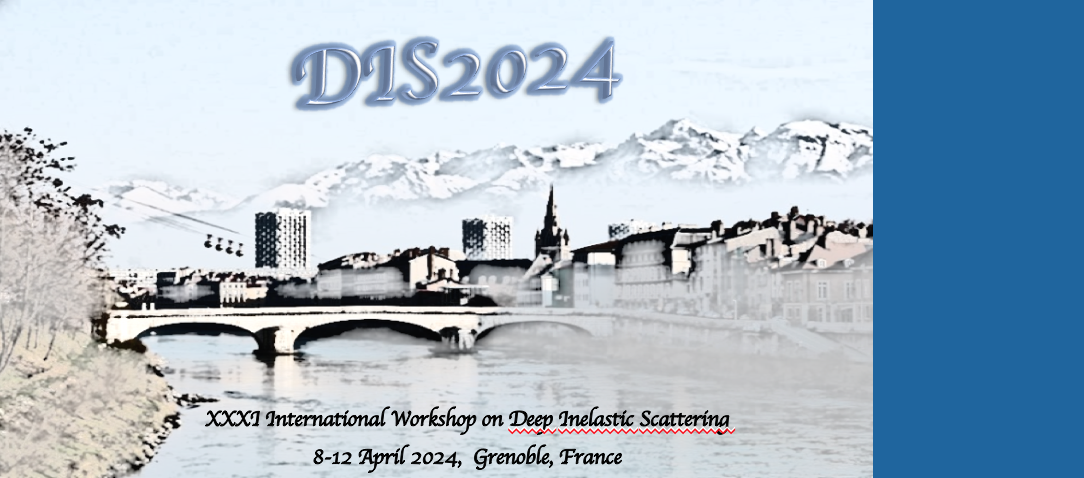Orateur
Description
The transversity distribution function, $h_1^q(x)$, describes the transverse quark polarization within a transversely-polarized nucleon, where $x$ is the longitudinal momentum fraction carried by quark $q$. Being chiral-odd, $h_1^q(x)$ can be accessed only when coupled with another chiral-odd function, such as the spin-dependent interference fragmentation function (IFF) via the di-hadron channel ($\pi\pi$, $\pi K$, $KK$, etc., in the final state). In transversely polarized proton-proton collisions ($p^\uparrow p$), the di-hadron azimuthal correlation asymmetry, $A_{UT}^{h_1h_2}$, that originates from the interplay between the spin of the fragmenting quark and the final state di-hadron, can be measured. This $A_{UT}^{h_1h_2}$ involves the convolution of $h_{1}^{q}(x)$ and IFF. However, this channel requires knowledge not only of IFF but also of the unpolarized parton fragmentation functions (FFs), specifically for gluons. Therefore, obtaining the unpolarized di-hadron cross-section ($d\sigma_{UU}^{h_1h_2}$) in $pp$ is crucial to constrain gluon FF and, consequently, $h_1^q(x)$. We will present preliminary results on $A_{UT}^{\pi^+\pi^-}$ using $p^\uparrow p$ data collected by the STAR experiment at RHIC at center-of-mass energies ($\sqrt{s}$) of 200 and 510 GeV from the 2015 and 2017 datasets, with integrated luminosities ($\mathcal{L}_{int}$) of 52 and 350 $\rm pb^{-1}$, respectively. Additionally, we will present the preliminary result of the $d\sigma_{UU}^{\pi^+\pi^-}$ using $pp$ data at $\sqrt{s} = 200$ GeV ($\mathcal{L}_{int} = $ 14 $\rm pb^{-1}$) from 2012 dataset.

